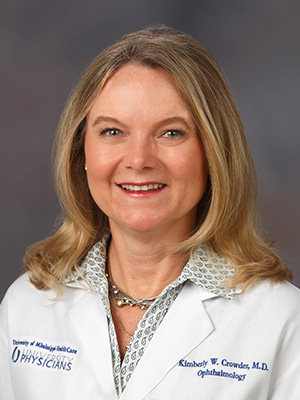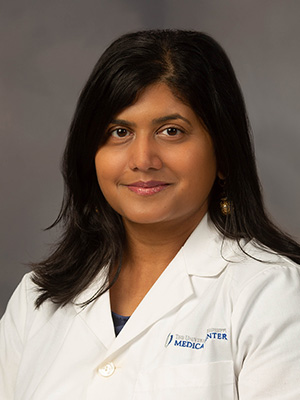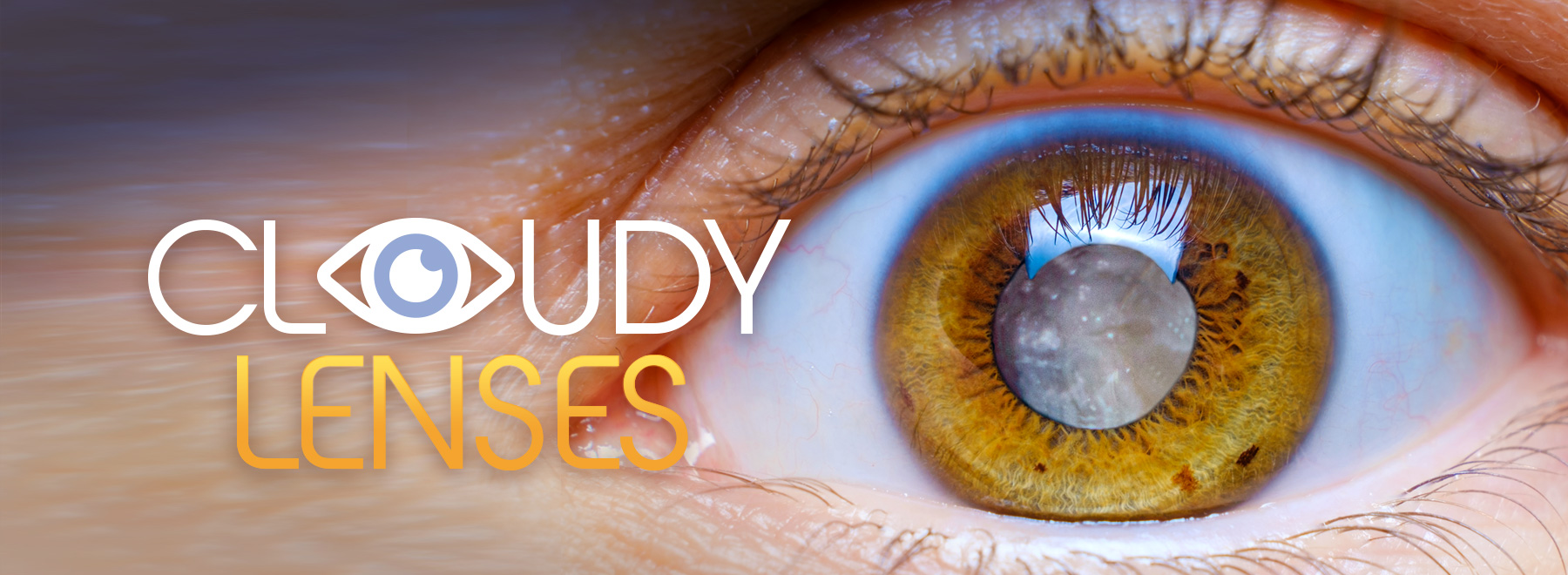Cataracts cannot be denied, but may be delayed

Dr. James Lynch, who had always been extremely near-sighted, was in his early 70s when he noticed things weren’t as sharp as they used to be.
“I couldn't see stars as well as I used to, and driving at night was more difficult,” said Lynch, professor emeritus of neurobiology and anatomical sciences at the University of Mississippi Medical Center.
He was experiencing symptoms of cataracts, clouding of the eye’s natural lens that occurs when proteins break down, causing things to look blurry, hazy or less colorful, according to the American Academy of Ophthalmology.

“Our eyes have lenses inside of them to help focus light and images similar to a camera lens,” explained Dr. Kimberly Crowder, professor and chair of the Department of Ophthalmology. “As we age — the normal slow development of cataracts usually begins around age 40 — our lenses gradually become more cloudy. When the lens is so cloudy that glasses or contacts no longer help to focus the light correctly and our vision is too blurry to perform our regular activities of daily living easily, then the cataract is considered ‘visually significant.’”
According to the National Eye Institute, more than half of people over 80 either have cataracts or have had surgery to remove them.
Although a normal part of the aging process, some people are more likely to develop them earlier.
The most preventable risk factor is smoking. If your parents had cataracts at a younger age, you are more likely to get them earlier, too. Other risk factors include certain health conditions, like diabetes. Some medications, including corticosteroids, can accelerate their development.
Regular exposure to the sun’s ultraviolet light without sunglasses and any eye injury can also speed up the progression. The AAO recommends wearing UV sunglasses when you go outside, or prescription glasses that have a clear, anti-UV coating to protect eyes from damaging rays.
“Prevention – there is no way to completely prevent cataracts from developing, but you can delay the onset – is about keeping yourself healthy: Diet and exercise and all the other good things your doctor tells you to do for your body applies to your eyes too, protecting your eyes from injuries by wearing eye protection in high-risk activities, wearing sunglasses outside to avoid UV exposure and not smoking.”
Because of the slow progression of the condition, you can often live with cataracts several years before they start to significantly impact your vision.

“On a microscopic level, cataracts can develop as early as 30 years of age, and of course earlier in cases of congenital cataracts,” said Dr. Khushboo Agrawal-Patel, assistant professor of ophthalmology. “On a clinic level, cataracts are not usually noticeable on most patients until they are in their 50s.”
Agrawal-Patel has seen cataracts in diabetic patients as young as their 30s. “Everybody gets cataracts,” she said. “It's a part of the aging process. There are definitely patients who do not have visually significant cataracts until they are well into their 80s and 90s, and usually these patients are healthy from a systemic standpoint and non-smokers.”
Once they’re noticeable, you may not need surgery right away. It’s when the cataracts start to negatively affect your daily activities – reading, watching television, driving – and glasses or contact lenses no longer help, that it’s time to consider surgery.
Crowder and her team perform roughly 1,000 cataract surgeries each year. As baby boomers and Generation X-ers age, ophthalmologists are seeing more patients who need surgery, she said.
During surgery, the ophthalmologist removes the patient’s natural, but now cloudy, lens and replaces it with a plastic intraocular lens implant. The outpatient procedure usually takes less than 20 minutes, and after recovering for about 30 minutes, patients are free to go home but must use antibiotic and steroid eye drops, as prescribed, to prevent infection and promote healing.
Though the procedure does not restore vision lost from eye diseases including glaucoma, the ophthalmologist may be able to correct a patient’s nearsightedness or astigmatism by implanting an intraocular lens with the necessary power.
Lynch, who was diagnosed with glaucoma at a young age, did not know about proper eye hygiene in his younger years. “I grew up in the era before the importance of good sunglasses was known, and, in fact, before really good sunglasses were even available,” he said.
Still, thanks to regular visits with ophthalmologists, including Dr. Crowder, he was diagnosed with cataracts before he noticed any symptoms. About six years later, after cataracts in both eyes began affecting his vision, he had surgery on one eye, and two weeks later, the other.
“The cataract surgery was much less unpleasant than having a colonoscopy,” he said. “I was sedated – not anesthetized – and was not really aware of what was happening. Recovery was simple and smooth.”
Although untreated cataracts in adults do not cause permanent blindness as do some other eye diseases, not treating them will result in vision getting progressively blurrier, said Crowder.
“Whereas cataract development is generally symptomatic, there are a lot of other eye diseases that can cause you to lose vision that have no symptoms in early stages. So it is important to have regular eye exams.”
Though rare, babies can be born with cataracts or develop them during childhood. Pediatric cataracts, untreated, can result in blindness, according to the AAO.
The take-home message, Crowder said, is to follow your doctor’s advice for your general health, including no smoking, protect your eyes in the sun and from injuries and get regular eye exams.
Lynch calls himself one of the lucky ones. “Not only did my vision improve due to the removal of somewhat foggy lenses and replacing them with crystal clear lenses, but the new lenses also partially corrected my lifelong nearsightedness. I still wear glasses for fine-tuning my vision, but in a pinch, I can even read my phone without any glasses.”
For more information about cataract surgery, or to schedule an appointment, call 601-984-5020 or visit the Department of Ophthalmology site here.
The above article appears in CONSULT, UMMC’s monthly e-newsletter sharing news about cutting-edge clinical and health science education advances and innovative biomedical research at the Medical Center and giving you tips and suggestions on how you and the people you love can live a healthier life. Click here and enter your email address to receive CONSULT free of charge. You may cancel at any time.



